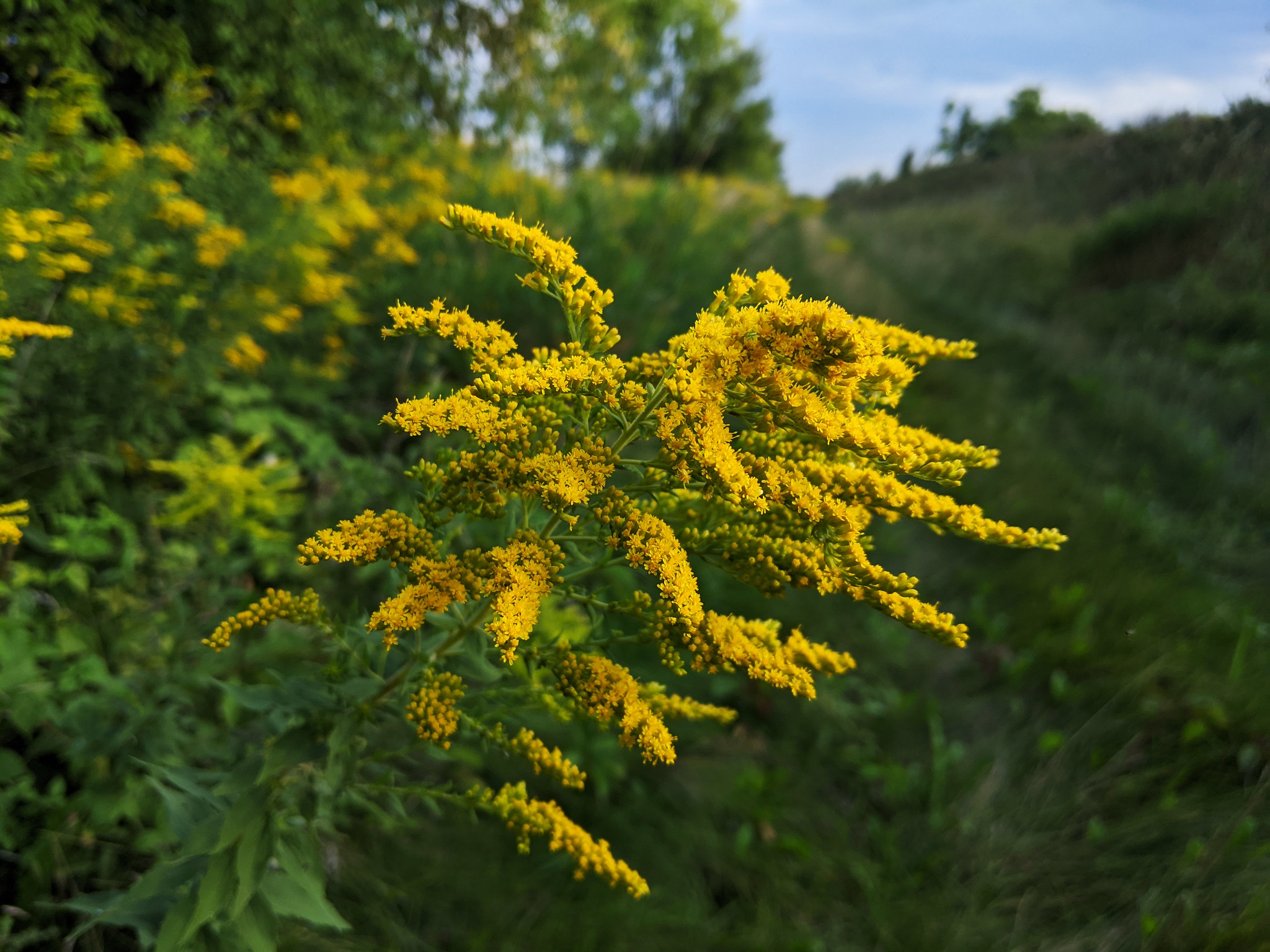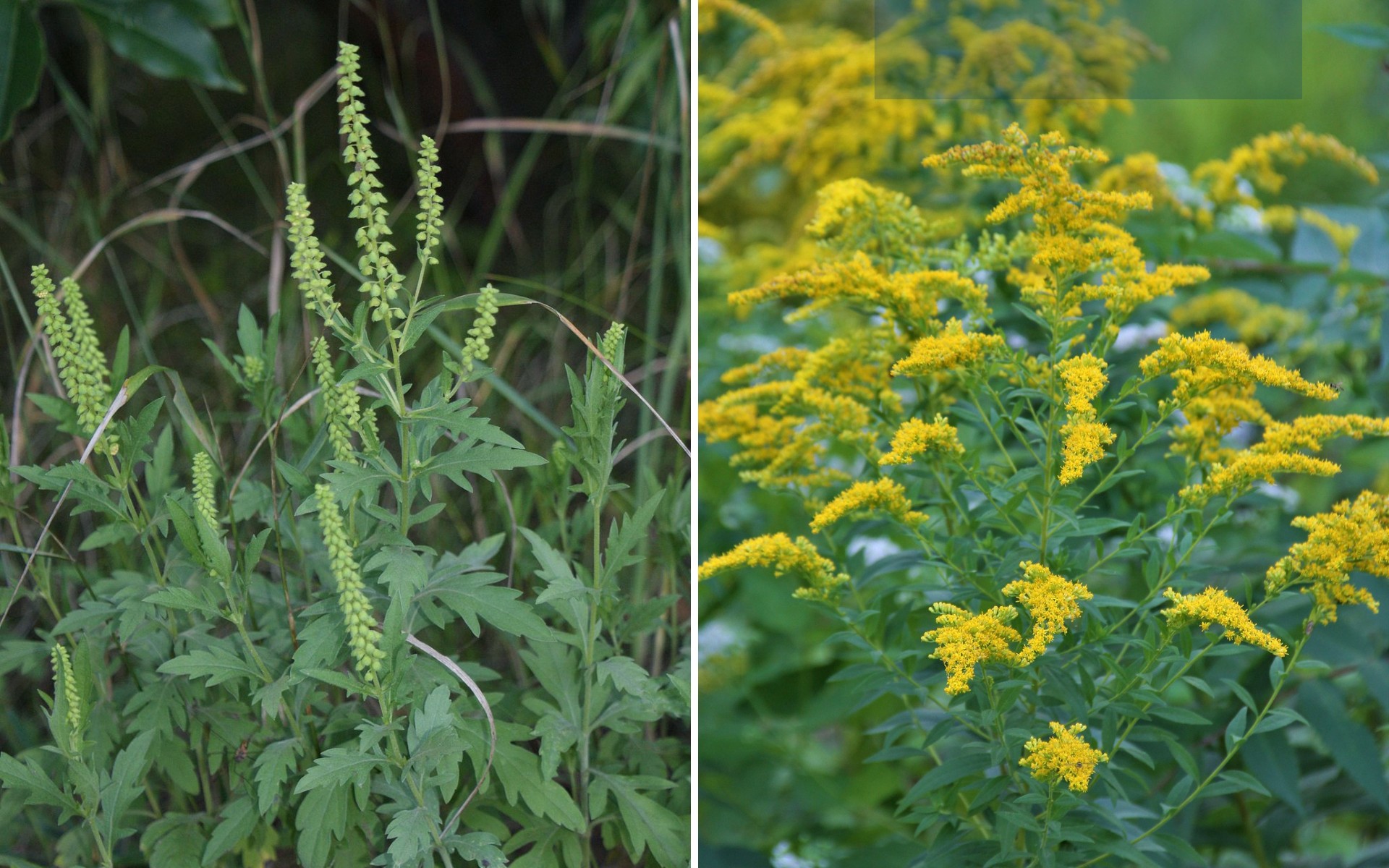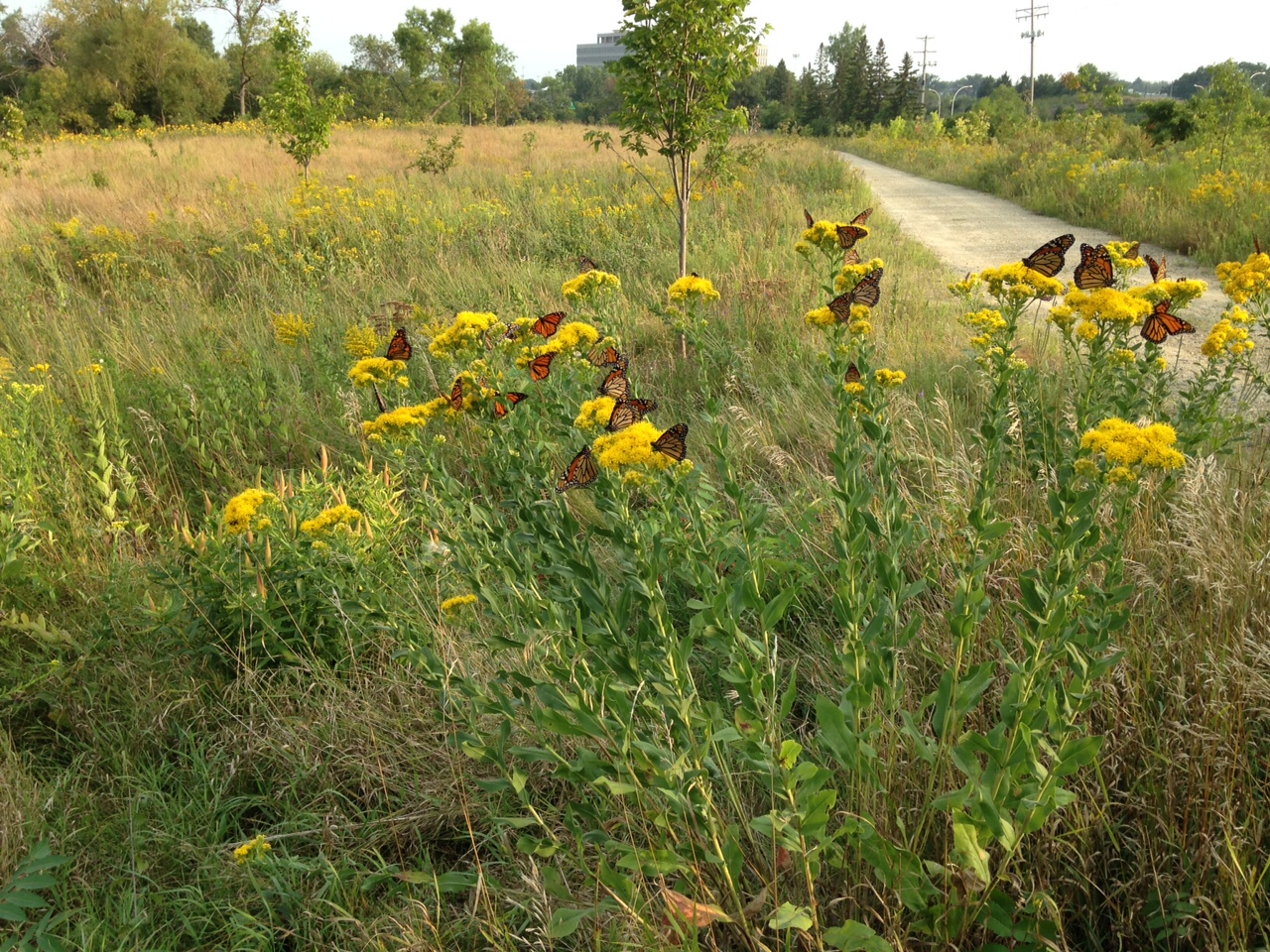Goldenrod or ragweed: Which causes allergies and which benefits pollinators?

Knowing the difference between goldenrod and ragweed can help people avoid allergies ... and the unnecessary removal of native goldenrod plants. (Photo by Courtney Celley/USFWS)
Goldenrod is a prolific plant with masses of showy, golden flowers that emerge in mid- to late-summer — the same time many allergy sufferers begin to experience all-too-familiar symptoms.
It's because of this annual cycle that goldenrod continues to be blamed for the millions of runny noses and countless itchy eyes experienced during these warmer months. For most of us, that blame is misplaced.
It's actually ragweed pollen that is the true culprit.
Why ragweed — not goldenrod — is the main cause of allergies
While it is certainly possible to be allergic to one of the roughly 18 species of goldenrod found in Minnesota, most people would need to touch the plant or put their face near it to get pollen into their nose and trigger their allergies. (And unless you're an FMR ecologist or native plant fanatic, it's unlikely you're nose-to-nose with goldenrod very often.)
Goldenrods are primarily insect-pollinated - their flowers attract bees and other pollinators. The pollen grains they produce are large and heavy, so they stay near the plant. They also produce less pollen because they don’t have to rely on wind to carry it to other far-off plants.
In comparison, ragweed (of which we have three species in Minnesota) is primarily wind-pollinated, meaning the plants rely on wind to disperse their pollen. As a result, they produce massive amounts of tiny pollen grains that the breeze then carries every which way and beyond. Also telling: many allergy sufferers here in Minnesota tend to find relief in the northern part of the state, where goldenrods are plentiful but ragweeds are uncommon.
Distinguishing goldenrod from ragweed

Western ragweed's flowers (on the left) are noticeably less showy than goldenrod's eye-catching yellow. (Photo of ragweed by Wikimedia Commons; photo of goldenrod by Rich Wahls for FMR)
Many people will mistakenly remove goldenrods from their properties to avoid allergies. Not only is this usually ineffective for allergy reduction, but it's also eliminating an important food source for native pollinators. How can you be sure you're pulling the right plant? Here are some ID tips.
Ragweed
Minnesota is home to three types of ragweed: common, western and giant. All have lobed leaves of varying sizes and branching stems, and can grow in clusters or singly.
Ragweed’s small flowers are not showy or brightly colored (those characteristics attract pollinators) when compared to goldenrods. The flowers are also produced both at the stem tips and at the upper leaf bases: the male flowers — located at the tips of the stem — produce copious pollen, while the female flowers are small, greenish and non-descript.
While common and western ragweed can grow up to 4 feet tall, giant ragweed can reach heights of 15 feet. This said, ragweed is very commonly found mowed to just a few inches high as it is common in many lawns, alleyways, etc. Because ragweed grows well on disturbed soils, it is often the first thing to show up after a disturbance. That's why you'll frequently see it along roadsides, on field edges and near new developments, making it common in both rural and urban settings.
Goldenrod
There are approximately 18 species of goldenrod in Minnesota. While it can be challenging to tell goldenrod species apart, differentiating them from ragweed is relatively straightforward once you know what to look for.
First off, they sport showy, golden flowers that attract pollinators such as bees and other insects. Their flower clusters occur in many forms but are always at the top of the plant. Many species’ flowers occur in spikes or flat-topped clusters.
Goldenrods are also single-stemmed plants with unlobed, lance-like leaves arranged in an alternate pattern on the stem. Leaves are often densely packed, giving them a slightly whorled appearance.
So remember that these yellow flowers you see across urban, suburban, rural and natural landscapes are great plants for pollinators and aren't likely contributing to your allergies or your neighbors'. There's almost certainly a less showy, more common plant triggering watery eyes.

Monarch butterflies on stiff goldenrod (Solidago rigida) at Coldwater Spring.